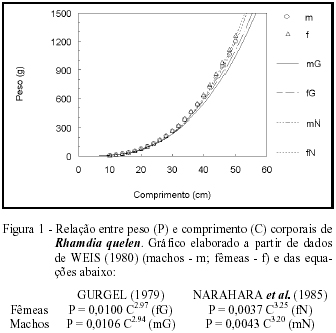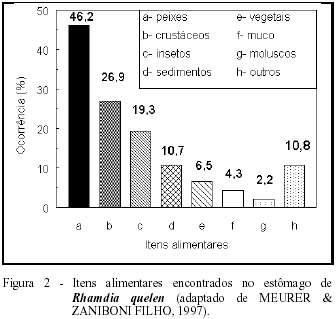The jundiá, Rhamdia quelen, occurs from Southern Mexico to Central Argentina, and the husbandry of this species is spreading in Southern Brazil. Consequently, the aim of this review is to present the available data of the biology of this species. R. quelen can reach 50cm of length and 3kg of weight, presents a nocturnal habit and lives in placid and deep waters of the rivers. Fingerlings support 10‰ seawater, up to 9g/l table salt and 4.0 - 8.5 pH range, with best growth at 8.0 - 8.5 pH range. It is an eurytermal species. This fish is omnivorous, but prefers fish. The sexual maturity is reached in the first year of life, and it is ovuliparous and in the natural environment the schools spawn in clean and calm waters with rocky bottom. There is no parental care. This species shows two reproductive peaks/year (spring and summer) and multiple spawning. The induced spawning had good results with human chorionic gonadotrofin (HCG) or pituitary extract. The embriological development of R. quelen is fast, and the larval development occurs in three to five days. The best feeding ration to the larvae of R. quelen is based on soybean lecithin, cattle liver and yeast. Several pathogenic bacteria and digenetic trematoda were identified in R. quelen. To improve the use of this species in fish culture, additional studies about physico-chemical parameters of the water, feeding rations and growth in captivity are essential.
jundiá; Rhamdia quelen; fish culture; reproduction




